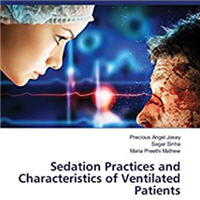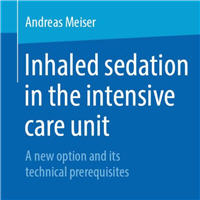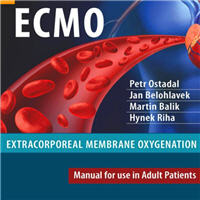Tag: ventilation
Sedation Practices and Characteristics of Ventilated Patients
Patients on mechanical ventilator experience anxiety and physiological stress. Sedating them can help those patients to cope up with ET tube, to bear all the interventions, for accessing adequate oxygenation and above... read more

Inhaled Sedation in the ICU: A New Option and Its Technical Prerequisites
Andreas Meiser summarizes the current literature on inhalation sedation of critically ill patients. To meet clinical demands, he describes the development of new devices to administer volatile anesthetics together with common... read more

Managing Rising COVID-19 Cases in ICU
I have been working in intensive care for over 20 years, including a decade as a consultant, and facing winter pressures has always been the norm. However, the past 18 months have been something else. During the winter... read more
Personalized Mechanical Ventilation in ARDS
A personalized mechanical ventilation approach for patients with adult respiratory distress syndrome (ARDS) based on lung physiology and morphology, ARDS etiology, lung imaging, and biological phenotypes may improve ventilation... read more
When Could Airway Plateau Pressure is Acceptable in ARDS Patients?
Limitation of plateau pressure (Pplateau) is critical for pro-tection from ventilator-induced lung injury in patients with acute respiratory distress syndrome (ARDS). Limiting to a 30 cmH2O threshold is a widely accepted... read more
Effect of Graded Early Mobilization on Psychomotor Status and Length of ICU Stay in Mechanically Ventilated Patients
This research showed that graded early mobilization was highly effective to improve the motor and psychological status of mechanically ventilated patients and reduce their length of ICU stay. In the control group mean... read more
Prone Positioning and Survival in Mechanically Ventilated Patients with COVID-19
In-hospital mortality was lower in mechanically ventilated hypoxemic patients with coronavirus disease 2019 treated with early proning compared with patients whose treatment did not include early proning. Among 2,338 eligible... read more
A Rational Approach on the use of ECMO in Severe Hypoxemia
Veno-venous extracorporeal membrane oxygenation (ECMO) is a helpful intervention in patients with severe refractory hypoxemia either because mechanical ventilation cannot ensure adequate oxygenation or because lung protective... read more
Oxygen Therapy in COVID-19 Patients: The Role of HFNC and CPAP
Oxygen therapy and non-invasive ventilation in COVID-19 should be based on pathophysiological changes and a step-by-step approach should be adopted in choosing the right therapeutic strategy for each patient. Continuous... read more
Clinical Trials Design Evaluating Sedation in Critically Ill Adults Requiring Mechanical Ventilation
These recommendations are intended to assist researchers in the design, conduct, selection of endpoints, and reporting of clinical trials involving sedative medications and/or sedation protocols for adult ICU patients who... read more
Percutaneous Dilational Tracheostomy for COVID-19 Patients Requiring Mechanical Ventilation
Patients with COVID-19 who survive the early days of MV experience severe and prolonged respiratory failure. An early modified percutaneous dilational tracheostomy (PDT) was safe for patients and healthcare providers and... read more
Breath-holding as a Novel Approach to COVID-19 Risk Stratification
Despite considerable progress, it remains unclear why some patients admitted for COVID-19 develop adverse outcomes while others recover spontaneously. Clues may lie with the predisposition to hypoxemia or unexpected absence... read more
No Such Thing As a Simple Sedation Case
In my CA-2 year I encountered an elderly gentleman who needed an angiogram of his dialysis fistula. After starting the propofol infusion I placed an oral airway because his tongue obstructed his breathing by flipping back... read more
Non-invasive Respiratory Support and P-SILI in COVID-19
Coronavirus disease 2019 (COVID-19) pneumonia is associated with hypoxemic respiratory failure, ranging from mild to severe. Due to the worldwide shortage of intensive care unit beds, a relatively high number of patients... read more
Protocol and statistical analysis plan for the PREPARE II randomised clinical trial
Cardiovascular collapse is a common complication during tracheal intubation of critically ill adults. Whether administration of an intravenous fluid bolus prevents cardiovascular collapse during tracheal intubation remains... read more
Why and How to Open ICU to Family Visits During the Pandemic
Since the lockdown because of the pandemic, family members have been prohibited from visiting their loved ones in hospital. While it is clearly complicated to implement protocols for the admission of family members, we believe... read more
Steer Clear of Magnesium for COPD
Knowingly or not, we in emergency medicine tend to lean into the Dutch hypothesis, a 1960s postulate that asthma and COPD are part of a spectrum of common disease (chronic obstructive lung disease), and should be considered... read more
NIV After Early Extubation Reduces Total Days Spent on i-MV
Patients recovering from an episode of hypoxemic acute respiratory failure (hARF) may benefit from a weaning strategy based on early extubation followed by immediate noninvasive ventilation (NIV) application. Compared... read more
Risk of Clinical Severity by Age and Race/Ethnicity Among Adults Hospitalized for COVID-19
Older adults and people from certain racial and ethnic groups are disproportionately represented in coronavirus disease 2019 (COVID-19) hospitalizations and deaths. Using data from the Premier Healthcare Database on 181,813... read more
Clinical strategies for implementing lung and diaphragm-protective ventilation
Mechanical ventilation may have adverse effects on both the lung and the diaphragm. Injury to the lung is mediated by excessive mechanical stress and strain, whereas the diaphragm develops atrophy as a consequence of low... read more
Sedation, Analgesia, and Paralysis in COVID-19 Patients in the Setting of Drug Shortages
The rapid spread of the severe acute respiratory syndrome coronavirus-2 (SARS-CoV-2) has led to a global pandemic. The 2019 coronavirus disease (COVID-19) presents with a spectrum of symptoms ranging from mild to critical... read more
COVID-19: Dual Oxygen Concentrator System for Mechanical Ventilation
Sabah in Malaysian Borneo is among the Malaysian states which reported a high number of detected COVID-19 cases during the current pandemic. Due to geographical challenges and limited resources, clinicians developed novel... read more









